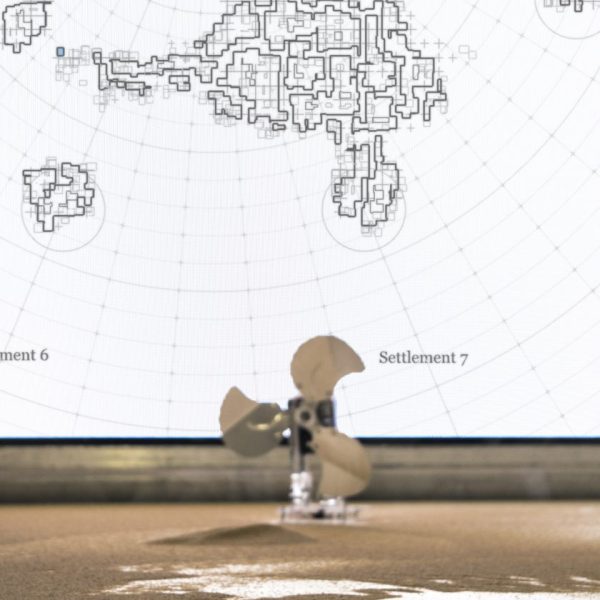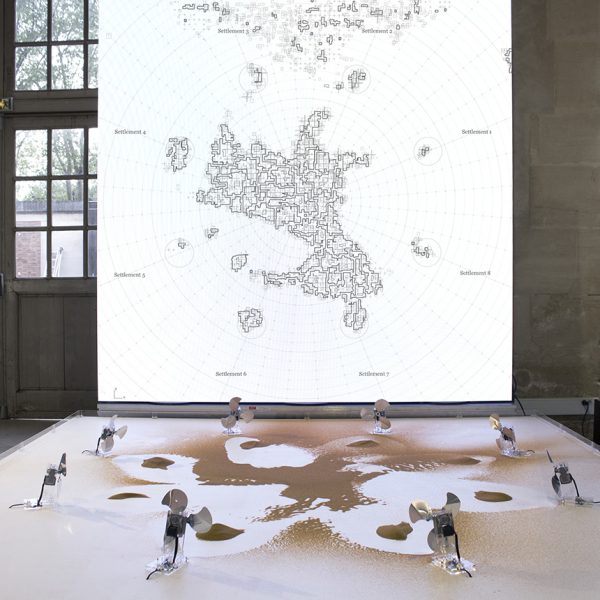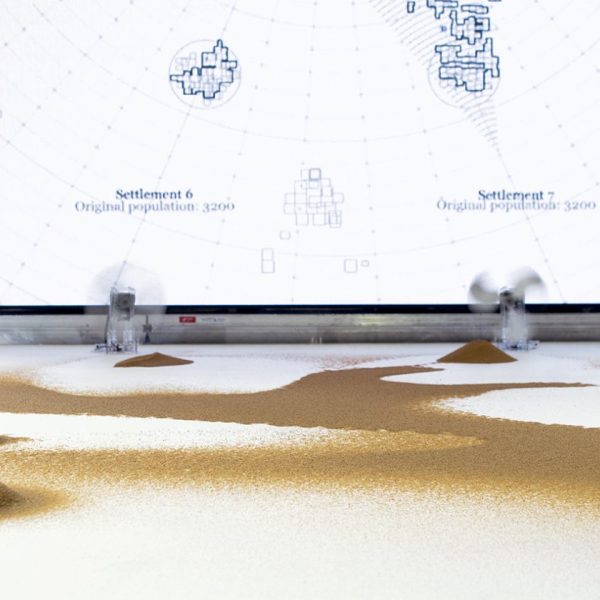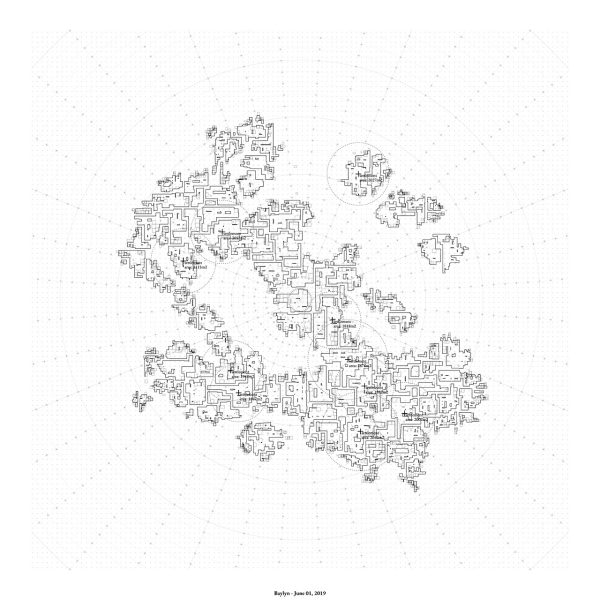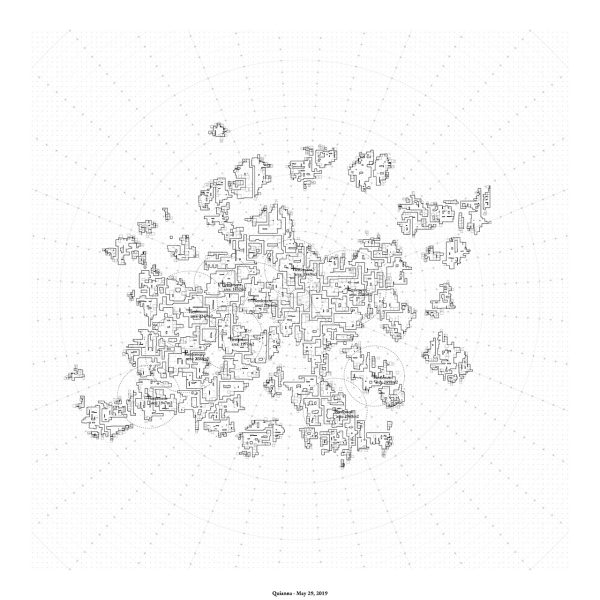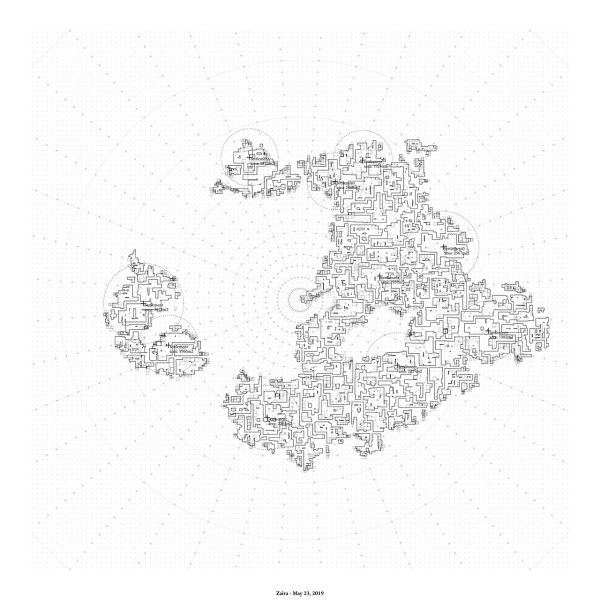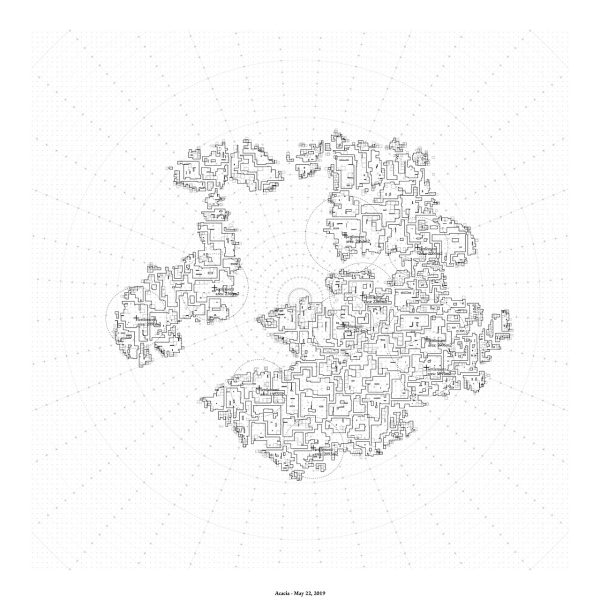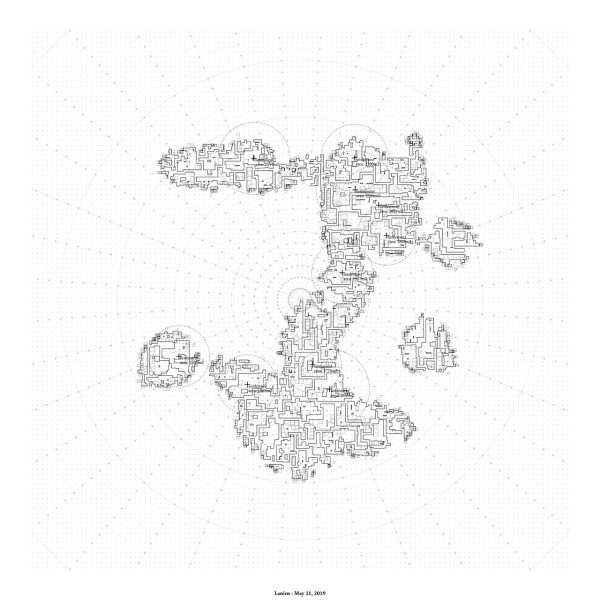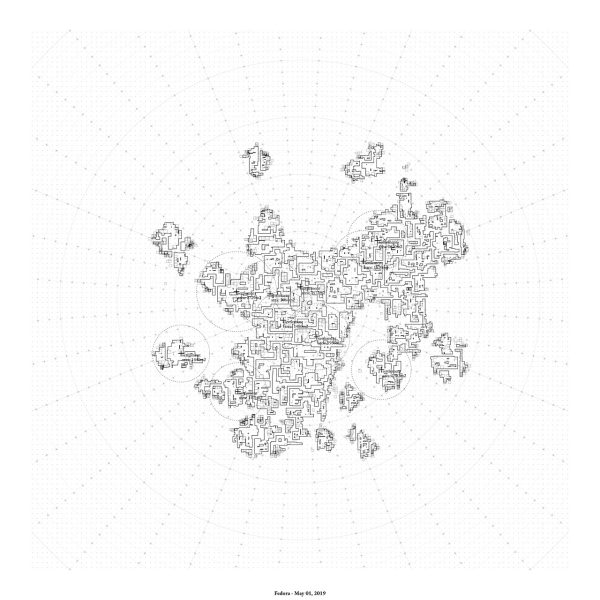Perpetual Unknowns
Dynamic simulation of geological change and urban response
Project: Appareil & Institute for Advanced Architecture of Catalonia (IAAC)
Direction: Edouard Cabay
Curation: Emmanuelle Chiappone-Piriou
Computational Simulation: Rodrigo Aguirre
Design Team: Anthony Boguszewski, Peter Geelmuyden Magnus
Physical computing: Angel Muñoz – WeAreCoded
Photography: Peter Geelmuyden Magnus
Research Origin: Machinic Protocols, IAAC 2018
Overview
Perpetual Unknowns is an automated installation that stages a speculative, reciprocal dialogue between geology and urbanization. Conceived as a dual system—one physical, one digital—it reflects the entanglement between natural formations and human settlements, and how they continuously reshape each other.
At its core, the project unfolds as a live, protocol-driven performance. On a horizontal surface, fans move across a bed of sand, creating constantly evolving dune formations. Simultaneously, a generative architectural drawing is projected onto a vertical canvas, responding in real time to the changing terrain. If the wind reshapes the sand, the drawing reorganizes urban forms to adapt. Inversely, if the digital city reaches certain density thresholds, the system intervenes physically, altering the sandscape. This establishes a closed feedback loop where geology and urbanism co-evolve—each informing the other continuously.
Rather than a static installation, Perpetual Unknowns operates as an open system governed by protocols: environmental, spatial, and algorithmic. The outcome is never final—only temporarily stabilized within an ongoing negotiation between matter and code, wind and wall, city and terrain.
This perpetual motion embodies the idea that we no longer act outside nature, but as active agents of geological change. Environmental forces—climate, speculation, pollution, migration—become spatial protocols, driving how territory is formed, inhabited, and ultimately, redefined.
Digital mirroring of physical evolution
The digital simulation was developed to continuously mirror and respond to the evolving state of the sand surface. Using Rhino and Grasshopper, a vision-based system read live camera inputs to detect areas of sand presence or absence. Based on this real-time data, a responsive urban model was generated: new blocks emerged in zones of accumulation; others eroded in areas swept clean. This simulation was then projected as an architectural drawing on the wall, representing a constantly shifting urban landscape.
Agent-based behaviors shaped the curves of the generative city, introducing porosity and spatial fluidity into the layout. These agents defined pathways and zones of compression, reacting to both the topography and density thresholds in the system. The result was a porous urban pattern in constant negotiation with the terrain—never fixed, always adapting.

